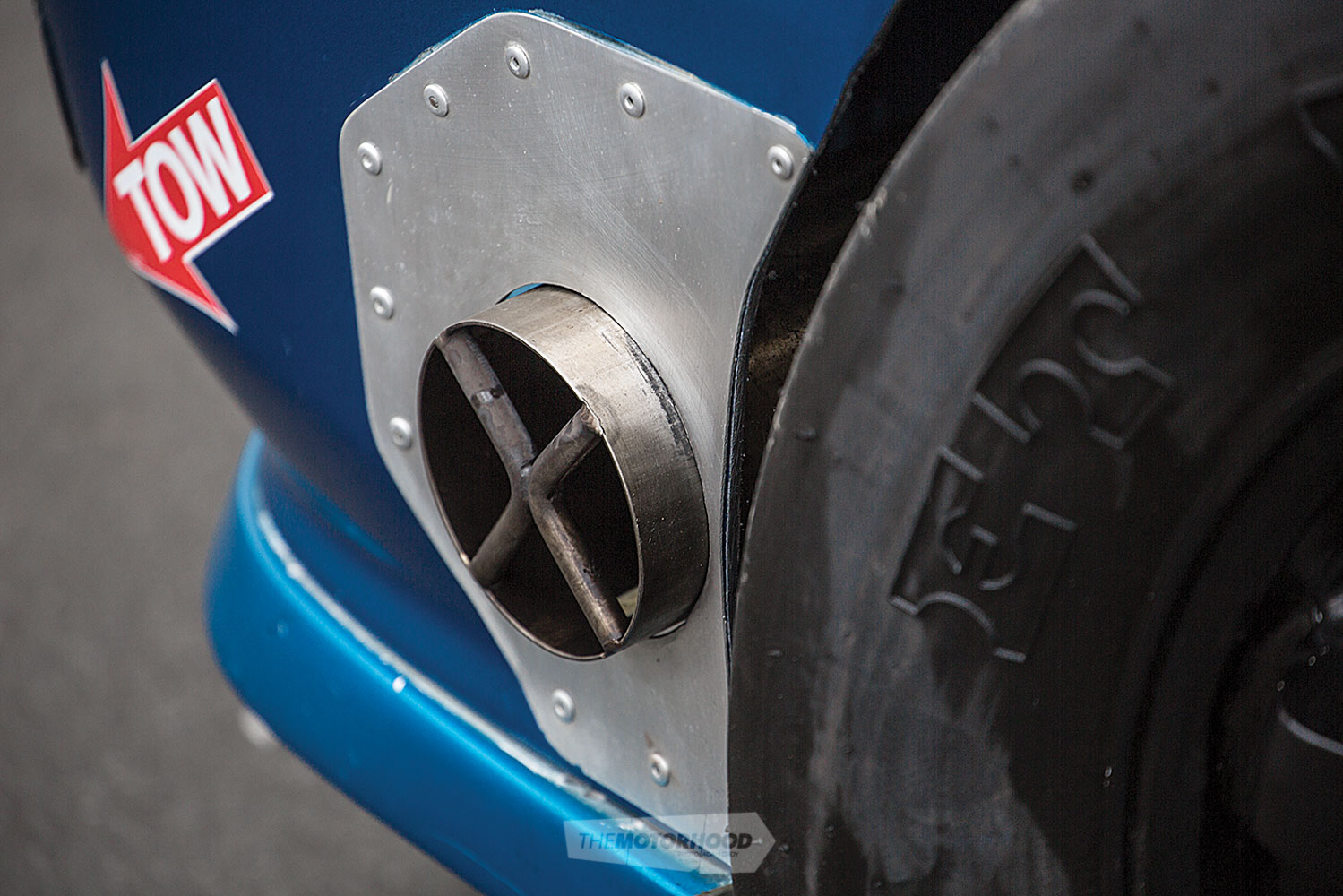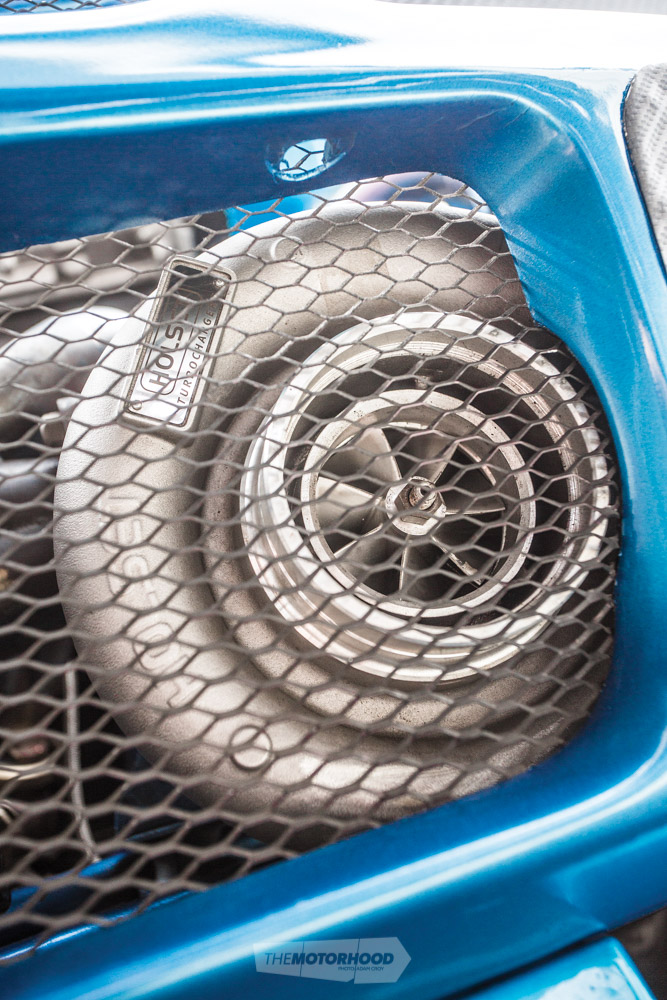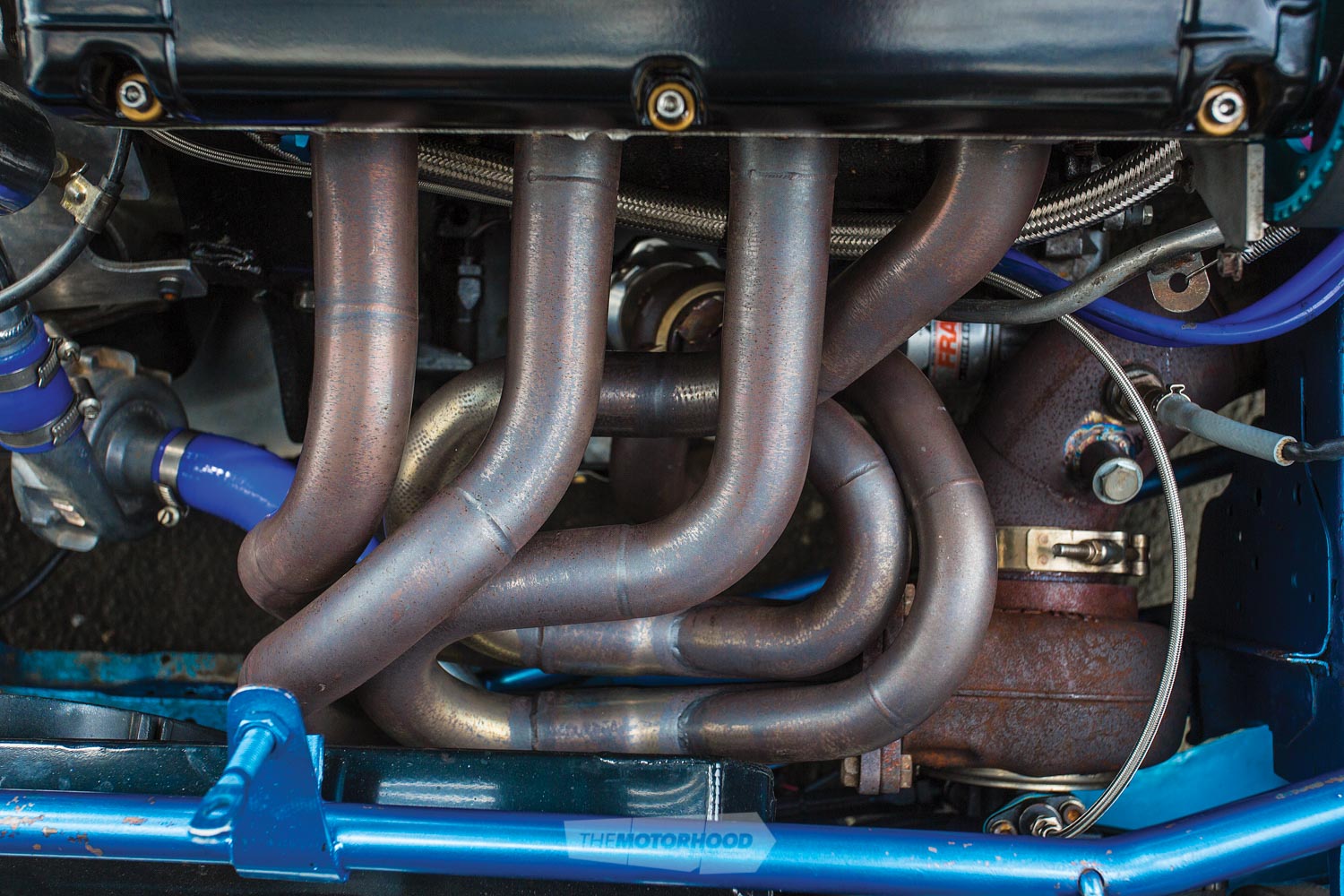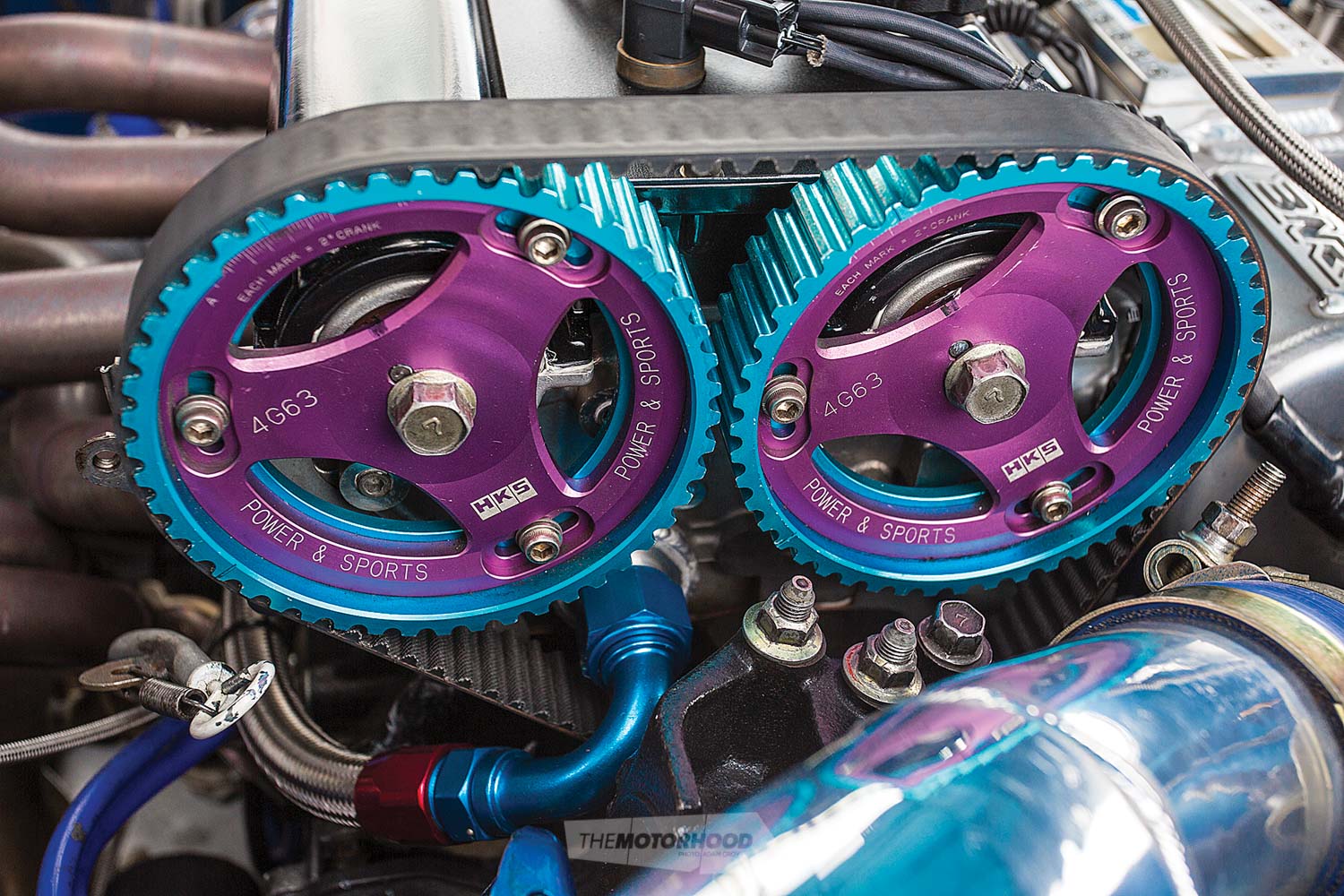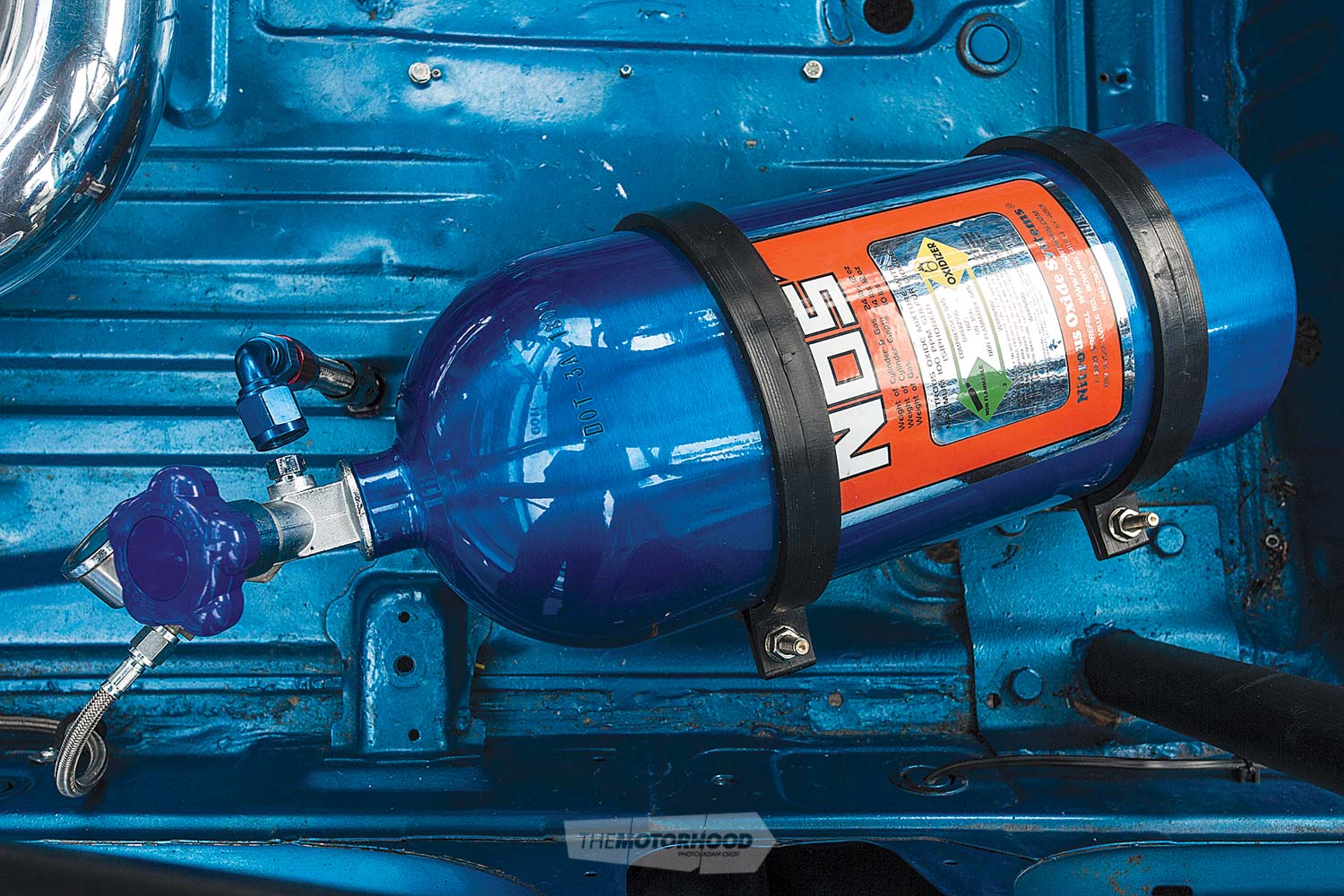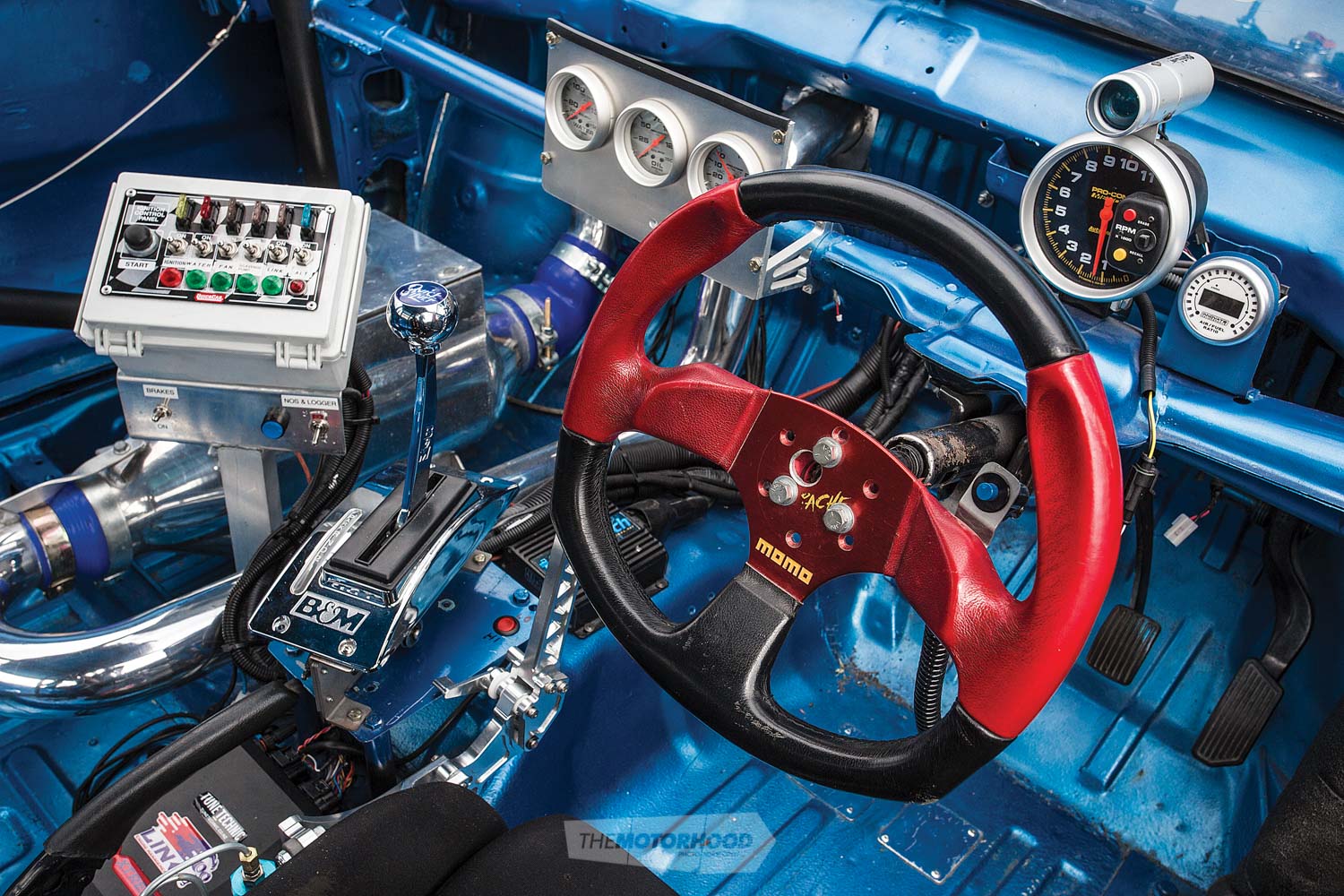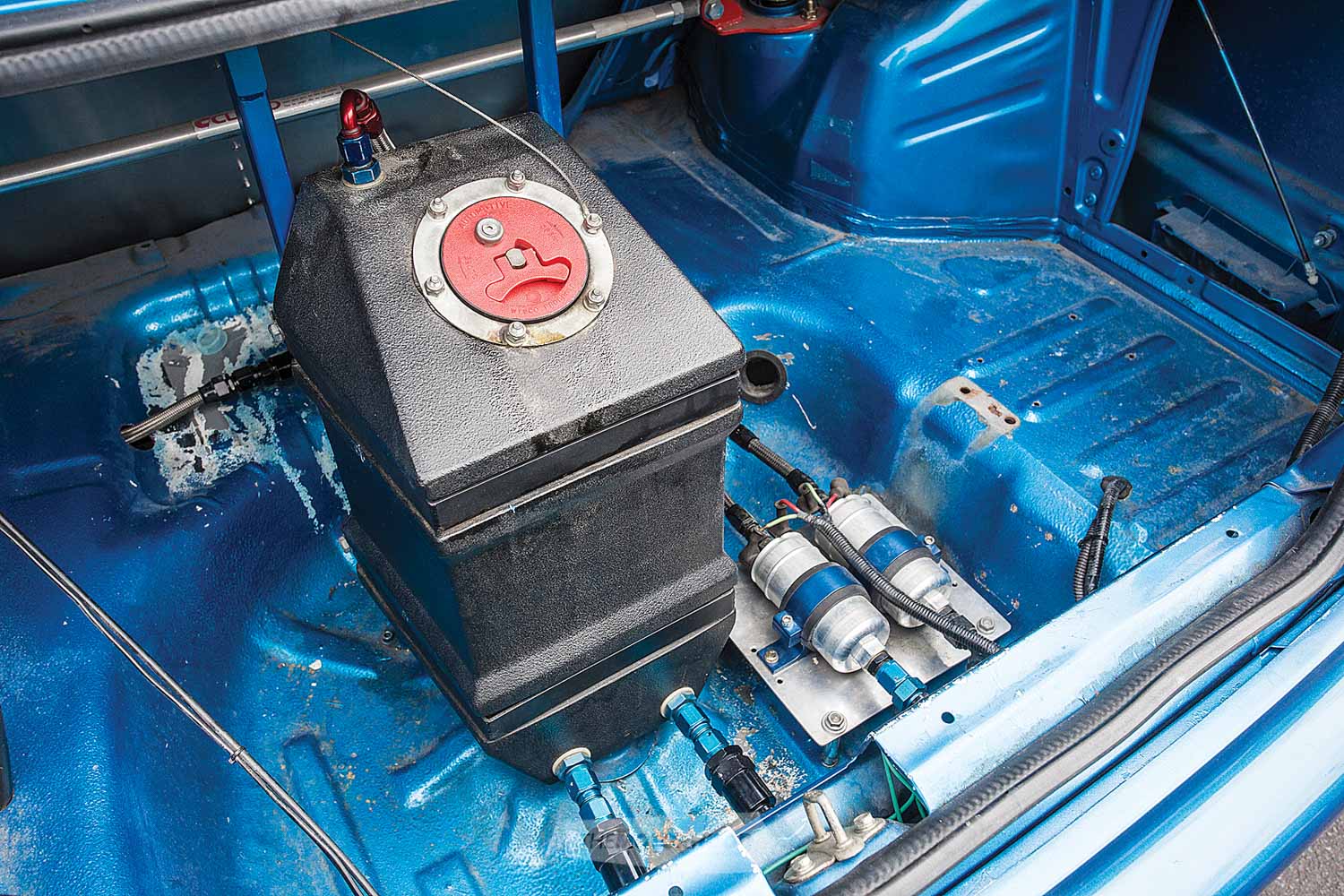It might be the only combo like it in New Zealand, but you’ll never achieve anything if you just keep following the pack right?
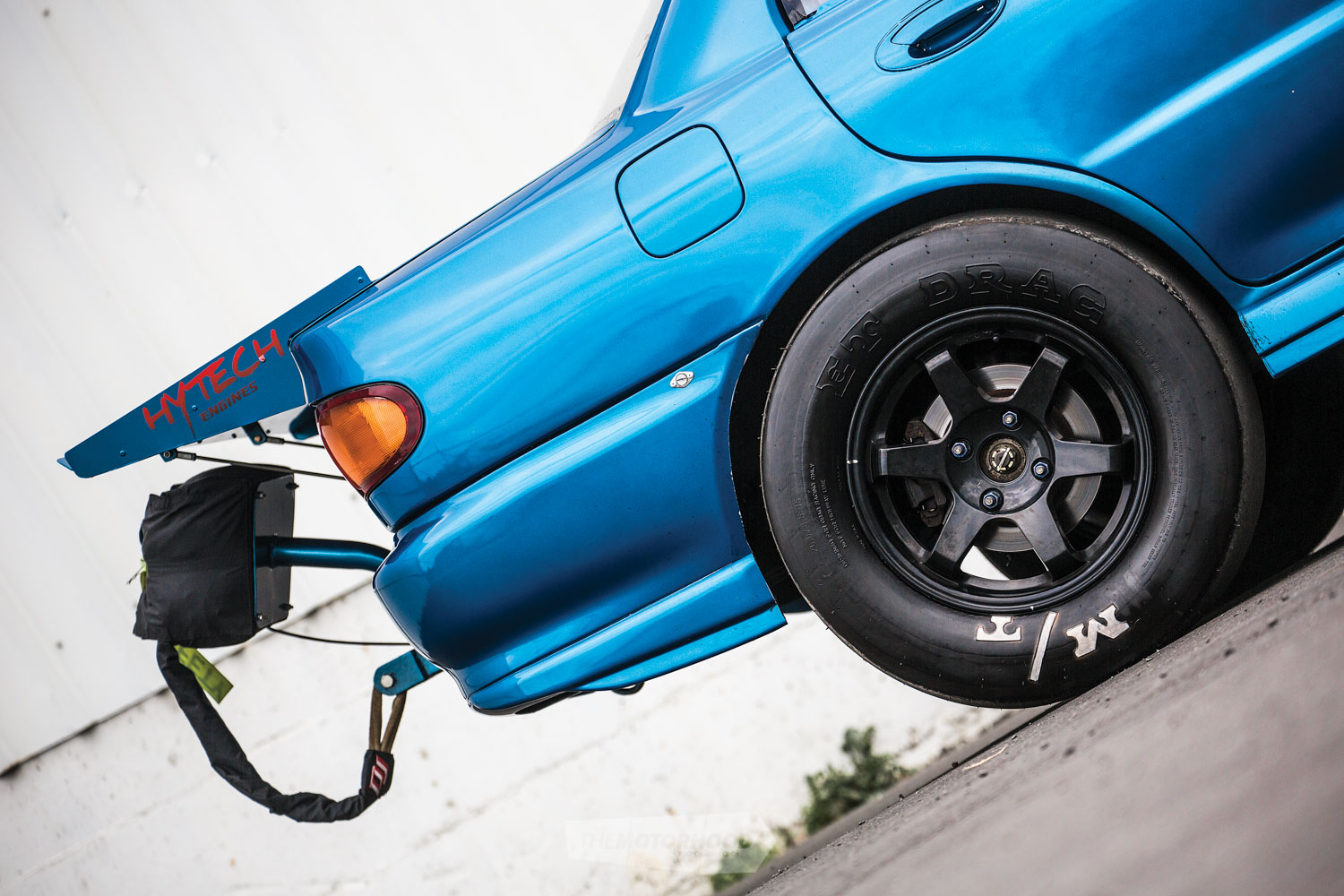
A wise man once said, “If you keep doing the same thing as everybody else, or doing the same thing over and over, you will keep getting the same results.” That man was Dick Richardson of Hytech Engines, an old dog who has screwed together more hypo engines than we’ve had cooked brekkies. What he was referring to is the driveline combination found in his nine-second Evo I, which has been serving its purpose as a drag test dummy for the past seven years.
Being a purveyor of highly strung race engines, trying new things on customer engines can be risky business, so R&D is best done at your own risk, and on your own gear. So, when he had achieved all that he wanted to with his 10-second GT-R, it was time for a new direction. With plenty of 4G63s being churned out of Hytech, an Evo was deemed the perfect test bed, so an unfinished project, which turned out to be the remains of ‘4BANGA’, was picked up.
Kicking things off, a quick tidy up had the ETs right where the GT-R had left off — in the 10-second bracket. The next seven years would become a blur of constant refinement in the quest for lower and lower ETs. Hey, this is a drag car, did you expect anything less?

In the early days, the Evo was running a Pfitzner Performance Gearbox (PPG) dogbox that once called ‘DOCILE’ home. Although this was up to the task of power figures north of 400kW, it simply passed the problem on to the next weakest link: the axles, of which the attrition rate was painfully high. Dick is no spring chicken, so thrashing on the car at the track to replace stuff like broken axles all the time is not his style. After all, he is only racing for fun.
The first solution came in the form of engineering his own billet axles with the help of Gearcutting Services. “This was no guarantee of a permanent fix,” says Dick, “so I began looking for a better solution. After doing my homework and due diligence, I made the decision to switch to an automatic. The world’s quickest 4G63s are running autos, so I thought, why not give it a go?”
Surprisingly, the auto is a junkyard dog from your run-of-the-mill Mitsi people-mover, so an easy-enough item to get, and it bolts directly to the 4G63. But actually getting it to handle the rigours of 600-plus kilowatts leaving the line at Meremere is another story. With no one local running the combo, and with the info Dick was able to track down from the US unreliable at best, it has required some serious R&D to get the combination right.

A handful of billet pieces now reside within, but, remarkably, there is a respectable number of factory Mitsi components still playing their role. The trans build is the handiwork of fellow racer Jason Horn of GRP Performance Autos, who also runs an auto-backed 4G63, only in rear-wheel-drive form. Even Jason was surprised to find a Mitsi auto capable of the handing this much power.
Current power figures sit at 612kW to all four wheels after the auto has robbed its fair share, but its capacity is unlikely to ever change: “I’m not really a fan of the stroker kits — sure, they make more torque, but they don’t rev as hard. I think it’s more of an achievement if you can get the two-litre to do the job.”
Doing the job currently is a grout-filled Evo block with a custom set of JE pistons with gas porting, and an ARD crank. New for this season is the shift to alloy/bronze combustion rings in favour of a head gasket, which will allow for more boost! Really, it’s up top where all the magic happens, and that’s why it’s seen countless combos and is under constant refinement. The current version sees Dick’s own porting, Kelford drag cams, and oversized valves. The porting provides a 19-per-cent increase in flow on the exhaust size, and around eight per cent on the inlet. “You don’t need to port it as much; it’s more important to get the exhaust side flowing,” Dick says.

Some of the best in the business locally are responsible for the fabrication, of which there is plenty. Ronnie Lim from RSL crafted the long-runner exhaust manifold that sees the Holset HX52 Pro breathing through the front bumper. With such elaborate hot pipes, space was at a premium in the engine bay. This meant a reduction in the size of the radiator and the relocation of the cooler. The solution was for it to occupy the passenger space in the form of a large icebox cooler. In one run, this box will melt 5kg of ice and heat it to the perfect soup temperature. This sees air intake temps reach 63°C by the run’s end. A new addition in the boost equation is the bulletproof manifold by BNR Engineering, after the old one started splitting as boost levels crept higher and higher.
As of last season, the best ET to date is a 9.3 with a best mph of 153 (246km). The car has eight-second passes written all over it, and Dick won’t stop till he gets there; but he is under no illusion as to how tough it will be. Will the new season be his time to shine?
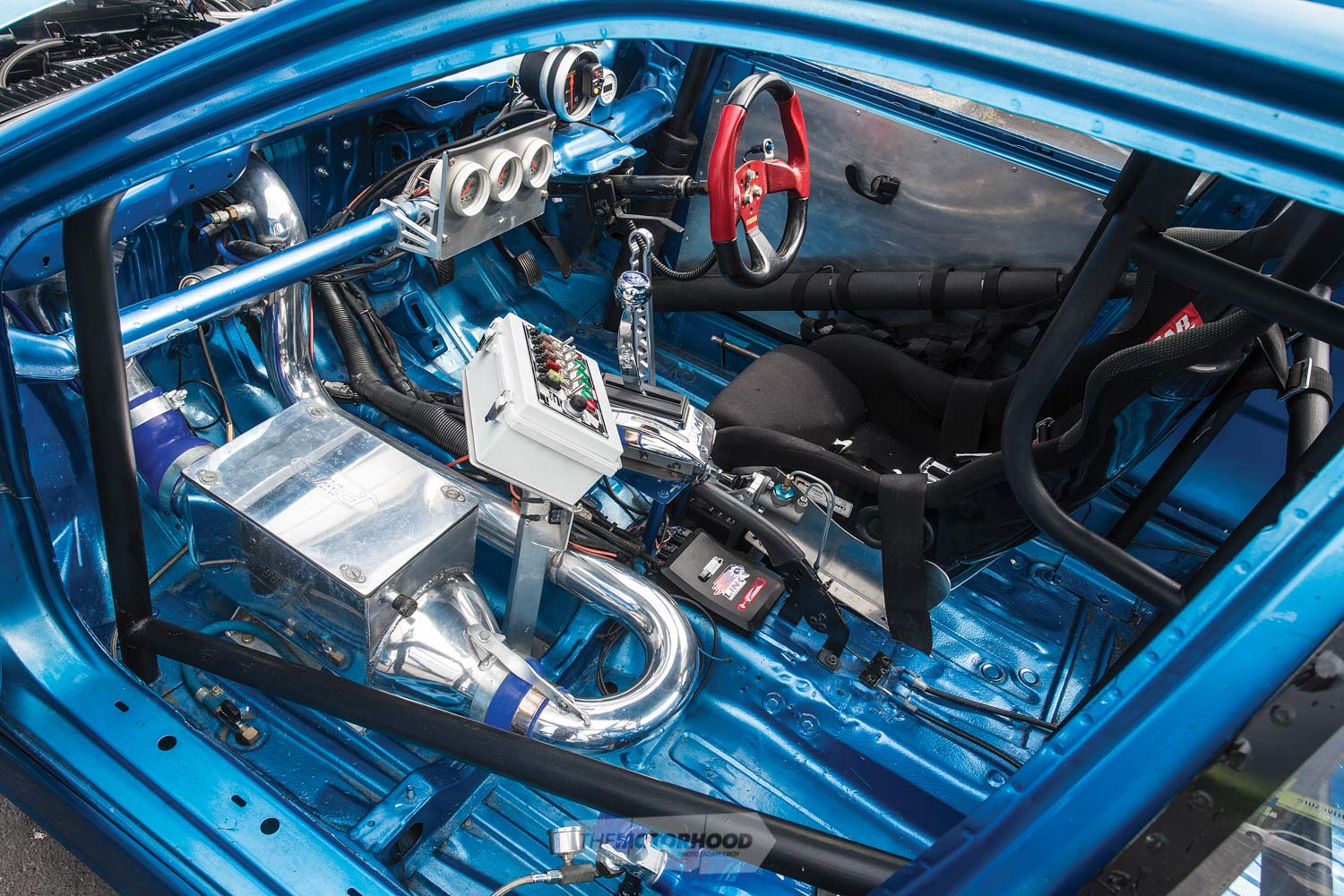
Heading into it, the car has had a raft of changes made to it, including the new engine we spoke of earlier, and a switch from the old 24.5-inch tyre size to a larger diameter 26 inches. The reason for this is that the smaller rubber saw the car banging off the limiter for the last 50m or so, whereas the larger rubber allows the Evo to be driven right out the back door. Not that this has equalled an improved ET yet, as 60 foots have slowed. “It’s 60-footing around the 2.0 mark, where it should be down around the 1.0–1.3,” explains Dick. But this combo has only been run at a single meeting, so it’s early days.
It’s not as simple as throwing another 10psi of boost in, either, as first they have to be able to hold the car there. Unlike with your more common trans, you can’t use a trans brake to hold the car on the line. Instead, the brakes have to do everything while you load up the boost and hope that it holds on. The addition of a hydraulic handbrake plumbed to all four corners should help the cause and allow the two-step to be reintroduced.
It’s all just part of the challenge that is so alluring to engineers such as Dick. If it were easy, then we doubt that he would have persevered with it so long. Even when the car finally achieves that eight, there are plenty more ET goals waiting in the wings. That’s the beauty and the curse of drag racing; your ET will rarely satisfy, and your goal posts will constantly shift.

Dick Richardson
Age: Very old
Location: South Auckland
Occupation: Automotive Engineer
Build time: Too long and still going
Length of ownership: Too long
Thanks: Jason Horn at GRP Performance Automatics, Dave at Tune Technic, Brendon Thomas at BNR Engineering, Ronnie Lim at RSL, Steve Murch at MSE Turbos, Turbosmart, and friends and family

1995 Mitsubishi Evo I
Heart
ENGINE: Mitsubishi 4G63, 2000cc, four-cylinder
BLOCK: Hard-filled block, custom JE forged pistons with gas porting, forged Nitto rods, forged ARD crank, Hytech balance-shaft delete kit
HEAD: Hytech ported head, Kelford drag-spec cams, stainless oversize valves, bronze guides, alloy/bronze combustion rings
INTAKE: Custom BNR intake plenum with SFI burst panel, PWR water/ice cooler
EXHAUST: RSL stainless side-exit
TURBO: Custom HX52 Pro, RSL manifold, scavenge pump
WASTEGATE: Turbosmart Pro-Gate 50
BOV: Trust Type R
FUEL: Four 2250 Bosch injectors, dual Bosch 044 external pumps
IGNITION: Spark Tech drag-spec coil-on-plug
ECU: Link G4 Xtreme
COOLING: Electric water pump (EWP), alloy radiator, trans cooler
EXTRA: 125hp (93kW) dry-shot NOS kit, brake vacuum pump
Driveline
GEARBOX: Modified RVR trans by GRP Performance, custom convertor, B&M Quicksilver shifter
EXTRA: Hytech billet axles, billet diff brace, billet transfer case brace, steel scatter-shield
Support
STRUTS: BC Gold coilovers
BRAKES: Hydraulic handbrake (for staging)
EXTRA: DJ safety parachute, nine-second-spec cage
Shoes
WHEELS: 15×8-inch Volk Racing TE37
TYRES: 26×8-inch Mickey Thompson slick
Exterior
PAINT: Custom blue metallic
ENHANCEMENTS: Alloy drag wing, Lexan windows, fibre-reinforced-plastic (FRP) headlight covers
Interior
SEATS: Recaro, QuickCar five-point harness
STEERING WHEEL: Momo
INSTRUMENTATION: Auto Meter Pro-Comp 11,000rpm tacho and oil-pressure, boost, and water-temp gauges; Innovate air–fuel ratio gauge
Performance
POWER: 612kW
FUEL: Q16
TUNER: Dave at Tune Technic
This article originally appeared in NZ Performance Car issue No. 254— to get your grubby mitts on a copy click the cover below





